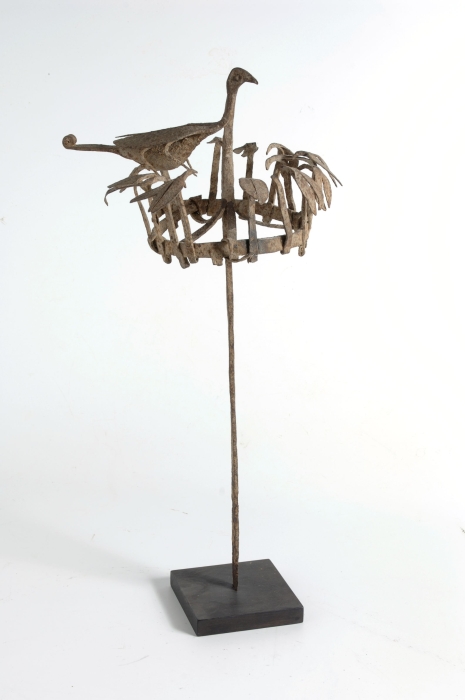Osanyin Staff on:
[Wikipedia]
[Google]
[Amazon]


''For spirits and kings''
at archive.org or Opa Erinle, in their work against mental and physical illness caused by malevolent forces and individuals. The Yoruba believe the power of Osanyin is vested in a wrought iron staff, called an Osanyin staff, that is placed on altars to this


Yoruba
The Yoruba people (, , ) are a West African ethnic group that mainly inhabit parts of Nigeria, Benin, and Togo. The areas of these countries primarily inhabited by Yoruba are often collectively referred to as Yorubaland. The Yoruba consti ...
herbalists and priests
A priest is a religious leader authorized to perform the sacred rituals of a religion, especially as a mediatory agent between humans and one or more deity, deities. They also have the authority or power to administer religious rites; in p ...
enlist the aid of Osanyin, the spirit of herbal medicines,''For spirits and kings''
at archive.org or Opa Erinle, in their work against mental and physical illness caused by malevolent forces and individuals. The Yoruba believe the power of Osanyin is vested in a wrought iron staff, called an Osanyin staff, that is placed on altars to this
Orisha
Orishas (singular: orisha) are spirits that play a key role in the Yoruba religion of West Africa and several religions of the African diaspora that derive from it, such as Cuban, Dominican and Puerto Rican Santería and Brazilian Candomblé. T ...
.
The staff is composed of a circle of small birds and a shaft in the middle that elevates a large bird above smaller ones. Babatunde Lawal suggests that the reason for this division could be to suggest the relaying of metaphysical powers from the celestial to the terrestrial realm. Lawal evokes the Yoruba reference to Osanyin as "The one who sees everything, like Olodumare," allowing him a vantage point from which he can protect all of humanity below.
The birds, emissaries of Ogun, refer to the herbalist's understanding of and power over these malevolent people. There are typically sixteen birds, invoking the most sacred number of divination, surrounding and confronting the central bird, which represents the smallpox god.
The birds on Osanyin staffs suggest an iconographic link with the birds on Obas' crowns.
References
{{Reflist Yoruba art Yoruba culture Yoruba religion Yoruba history African art Nigerian art